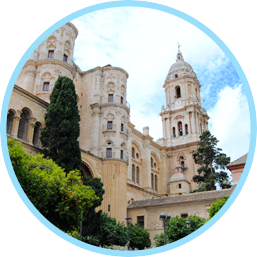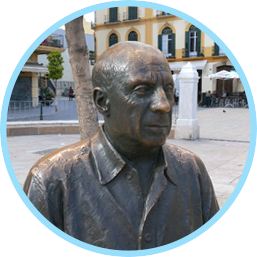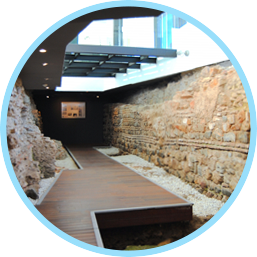
Nowadays tourists arrive at the port of Malaga via those big cruises at its eastern dock. But this fashion to travel around the Mediterranean Sea is not only from these days. Although these big cruises are arriving in the later years to Malaga, thanks to the last extension of its port, this is something familiar to locals from long time ago. From its very beginning, Malaga has welcomed people who arrived from the sea, even its very founders, the Phoenicians.
In fact, there wasn’t even a port, and the line coast of the city was further inland. But late maritime archaeological findings can tell us how they reached land. 3.000 thousand years ago, Phoenicians were the masters of the Mediterranean Sea. They didn’t have tools like compasses or astrolabes (they would be invented in the Middle Ages). But they were good at astronomy, and they used the North Star as a guide.

Phoenicians used to start their navigation at Tyro, their hometown. Placed at the coast of Lebanon, they always made the same route: Tyro-Cyprus-Crete-Aegean Sea-Sicily-Malta-Sardinia-Ibiza and finally, the Iberian Peninsula. They used to contact with local people at all those places. They firstly established commercial relationship with them. Later, they would end up founding colonies there. They got local goods from one colony and traded with them with other colonies. From Spain they would come back to Tyro through the Northern coast of Africa. This whole journey through the Mediterranean Sea would take one year to be completed, as they couldn’t sail at the autumn and winter period.
Their boats used to navigate in groups, so their journey would be more profitable. They have found sunken some of these vessels, like two Phoenician boats at Mazarron, at the southeast coast of Spain. Thanks to these, now we know they travelled at night with some oil lamps. They used them not only to illuminate their decks, but also let be seen by other fellow boats. They used the sail to navigate, and they only rowed when they had to reach or leave land. But sometimes they didn’t even need to reach land. Small boats from locals came to meet Phoenicians at their vessel and traded at sea.
And because of all that trading, we all have a great debt to them. Their direct contact with all the civilizations facing the Mediterranean Sea made them think how to connect with all of them, so they invented one of the main advances for mankind: the alphabet. They found how to communicate with them with a common thing, the way we pronounce.

They even were brave enough to cross the Straits of Gibraltar, which was considered the doors of the unknown and the danger. Phoenicians were the first to arrive by the sea to Portugal and some parts of Atlantic Africa. It is very fashionable nowadays to say they even arrived to North America. You may have the chance to watch it in some TV programs, but reliable experts assure they didn’t have the proper technology to do it.
Phoenicians, like all ancient cultures, were very superstitious and devoted to deities representing forces from nature. They have found at caves in Gibraltar, as well as in La Caleta, a famous beach at Cadiz city centre, remains from rituals, like a kind of marriage between the sailors and the sea, so that navigating through the Atlantic Ocean would be favoured.
Small traces of their culture are kept, but we still have something alive directly descending from these very first founders of Malaga. Our typical vessel, named “Jabega”, famous for having two eyes drawn at the prow, has got exactly the same size as the boats found sunken in Mazarron. It has been kept in Malaga’s culture as fishermen have used it from ancient times until these days.

Later history brought bigger boats to the coast of Malaga, with other cultures to trade or settle down. Nowadays, the biggest cruises on the planet reach Malaga with lots of people wanting to explore what all these cultures have left and what we are now.
Ending with our first visitors, we have to say that Phoenician wasn’t their real name. They used to call themselves as Canaanites. Phoenician is how Greeks used to called them, which root means purple. Not that they were purpled skin or something like that. They were famous for obtaining and trading with the purple colour (and fabrics dyed in that colour). This was produced in Malaga, and the way they obtained that strange colour is one of the stories we tell in our Le Grand Tour. If you have liked this article, you will definitely enjoy one of our tours. Join us and you will learn about this and many other interesting stories.












